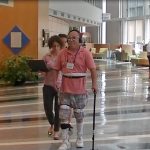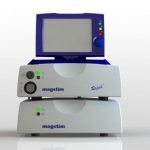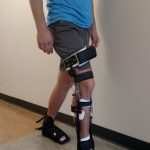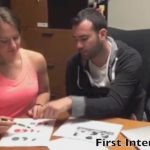Tag: Rehabilitation

Role of Rehabilitation in Concussion Management: A Randomized, Controlled Trial
We propose a randomized clinical trial to yield preliminary data on the added benefits of active rehabilitation during recovery after sport-related concussion in professional and amateur athletes. This trial marks an international collaborative effort involving the NFL, CFL, New Zealand Rugby, American Hockey League, and academic researchers in the United States. Specific Aims: T … Read more

Portable Warrior Test Of Tactical Agility – POWAR-TOTAL
This pilot project funded by NC State-UNC Rehabilitation Engineering Center is focused on testing the use of smartphone technology in place of laboratory grade accelerometry to measure movement in a military tactical maneuver. The POWAR-TOTAL assessment is derived from two high level mobility tasks that were part of a return-to-duty test battery, the Assessment of Military Multit … Read more

Evaluation of the Defense and Veterans Brain Injury Center’s Progressive Return To Activity Clinical Recommendation for Active Duty Service Members with Concussion
In 2014, the Defense and Veterans Brain Injury Center (DVBIC) released newly-developed clinical recommendations (CRs) detailing the step-wise return to unrestricted activity following mild traumatic brain injury (mTBI)/concussion. The CRs and their tools provide the medical community clear guidance for safely returning patients to pre-injury activities and more generally, for fos … Read more

Real World Assessment of Dual Task Performance after Stroke
Adults with stroke have a diminished ability to walk and simultaneously perform cognitive tasks (referred to as dual-task interference). Dual-task interference is attributed to a reduction in information processing capacity. Without adequate attentional resources for concurrent performance of two tasks, individuals must make a decision about which task to prioritize. Inability to … Read more

SBIR: Targeted tCDS Aphasia Trial (Phase2)
The potential benefits of conventional transcranial Direct Current Stimulation (tDCS) using sponge-pad electrodes have been demonstrated in small pilot studies for motor rehabilitation after stroke and the treatment of aphasia after stroke. Unfortunately, conventional sponge-electrode montages lead to diffuse stimulation throughout cortex with less-than-optimal intensities at the … Read more

Testing Novel Measures of Community Function and Participation in Adults with Cerebral Palsy
Cerebral palsy (CP) is the most common cause of physical disability in children, impacting approximately 1 in 500 young Australians and 2-3 in 1,000 young Americans. Most of these children live to within five years of a typical lifespan, depending on the severity of the disorder. However, after age 21 when they exit the school systems, the availability and accessibility of formal … Read more

Immediate Effects of Repetitive Transcranial Magnetic Stimulation on Corticospinal Excitability of the Quadriceps in People with Knee Osteoarthritis
Knee osteoarthritis (OA) is prevalent and knee replacement surgeries are increasing. Quadriceps weakness is one of the most modifiable risk factors and treatments for knee OA, but strengthening efforts are limited by neural mechanisms that contribute to persistent quadriceps inhibition and pain. Interventions that affect neural mechanisms may serve as valuable adjuncts to exercis … Read more

Applying stance phase knee control during gait for people with stroke undergoing inpatient rehabilitation.
Improving walking ability is an important clinical goal for people with hemiparesis after stroke. Frequently after stroke, individuals walk with a slow, asymmetrical, and energy-inefficient gait. In fact, almost one third of people living at home after stroke are unable to walk unsupervised in their communities. This study intends to initiate investigation into an intervention to … Read more

Scientific Service Program for Elite Discus and Javelin Throwers
The purpose of this project is to provide biomechanical evaluation of throwing techniques to elite US discus throwers and javelin throwers. This is part of the High Performance program of USA Track & Field. We collect kinematic data for elite US athletes using three-dimensional videographic techniques, and compare their data to the data of world elite athletes, and suggest change … Read more

Examining person and environment factors associated with community participation for adults with Autism Spectrum Disorder (ASD)
This study combines innovative Global Positioning System (GPS) and Geographic Information System (GIS) measures to describe real-time community integration activities of adults with ASD living with family or in a group home, and investigates critical person and environmental factors associated with participation. These results will be combined with adult outcome survey data to ex … Read more
